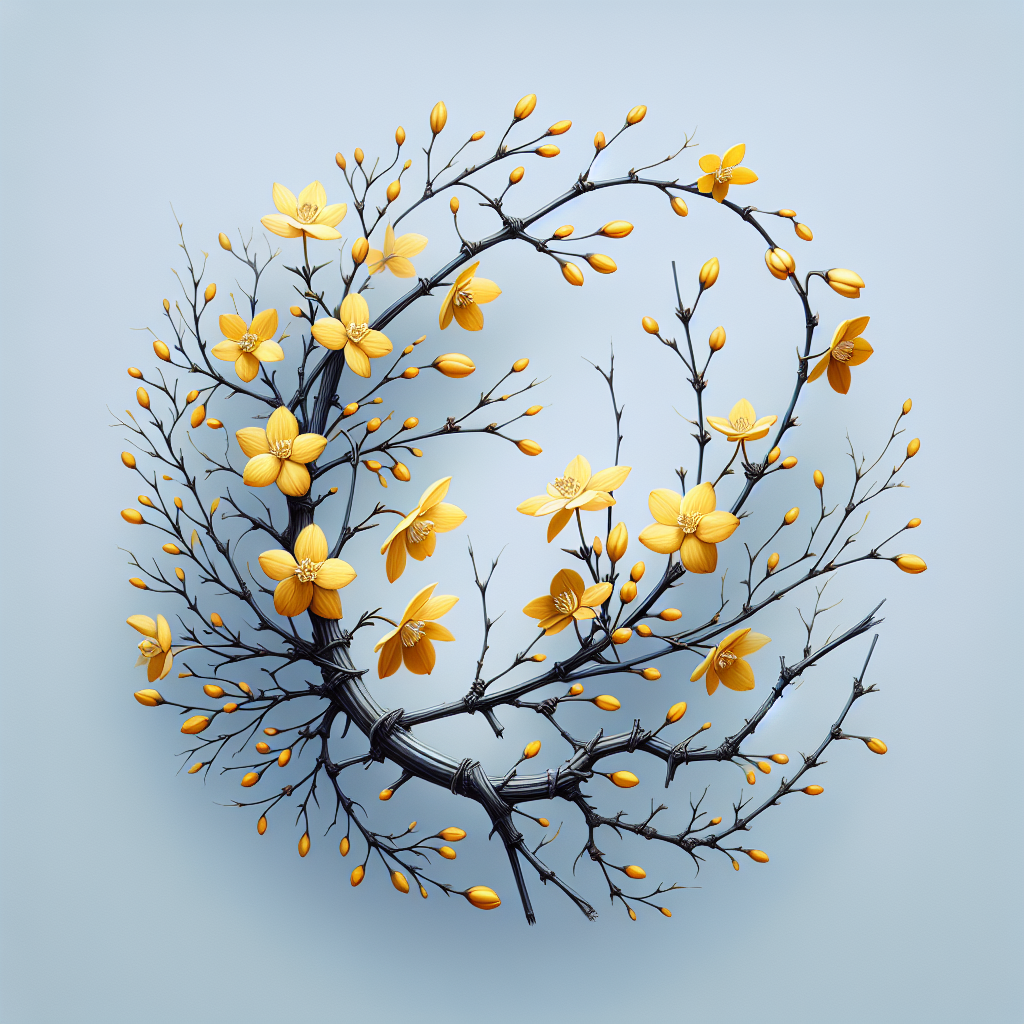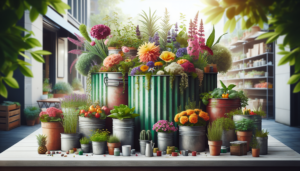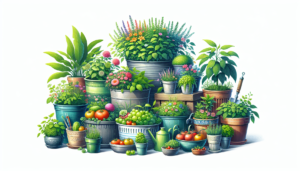
January is the perfect time to add some greenery and vibrancy to your living space with container plants. Whether you have a green thumb or are just starting out, there are plenty of options to choose from. From the hardy and low-maintenance Snake Plant to the lush and colorful Peace Lily, these top container plants for January will not only brighten up your home but also provide numerous health benefits. So, get ready to embrace the new year with these wonderful additions to your indoor garden.
Top Container Plants for January
January may be the heart of winter, but that doesn’t mean you can’t enjoy the beauty of plants in your home or garden. Container gardening is a fantastic way to bring some greenery and color to even the coldest months, and there are several plants that thrive in the winter season. In this article, we will explore the top container plants for January, their descriptions, care and maintenance tips, as well as their best growing conditions. So let’s dive in and discover the perfect plants to brighten up your winter surroundings!
1. Winter Jasmine (Jasminum nudiflorum)
1.1 Description
Winter Jasmine, scientifically known as Jasminum nudiflorum, is a stunning plant that bursts into yellow flowers during the winter months. Native to China, this deciduous shrub offers an exceptional display of colorful blooms even in the harshest of conditions. The delicate yellow flowers appear before the leaves, creating a breathtaking contrast against the bare branches.
1.2 Care and Maintenance
Taking care of Winter Jasmine is relatively easy. It prefers well-drained soil and full sun or partial shade. This plant is resilient and can tolerate a range of soil conditions, but be sure to water it regularly, especially during dry spells. Pruning is necessary to maintain its shape and encourage healthy growth. Simply trim it after flowering to promote new growth for next winter’s spectacle.
1.3 Best Growing Conditions
Winter Jasmine thrives in USDA hardiness zones 6 to 10. It is well-suited for container planting, so you can easily move it indoors during extremely cold snaps. Provide a trellis or wire support for the vine-like branches to climb, creating an enchanting display of cascading flowers.
2. Winterberry (Ilex verticillata)
2.1 Description
If you’re searching for a plant that adds a pop of vibrant color to your winter garden, look no further than Winterberry, or Ilex verticillata. This stunning deciduous shrub is known for its radiant red berries that persist throughout the winter months, providing a feast for the eyes and a source of food for birds.
2.2 Care and Maintenance
Caring for Winterberry is relatively simple. This plant thrives in moist, acidic soil and prefers full sun to partial shade. Regular watering is crucial, especially during dry spells. It is important to note that Winterberry requires both a male and female plant to produce berries. So be sure to plant both genders nearby to ensure a bountiful display of bright red berries.
2.3 Best Growing Conditions
Winterberry is native to North America and is well-suited for USDA hardiness zones 3 to 9. It adapts well to container planting, allowing you to enjoy its beauty even in a limited space. Consider planting it in a large pot or container to showcase its vibrant berries as a focal point in your winter garden.
3. Pansies (Viola tricolor var. hortensis)
3.1 Description
Pansies, scientifically known as Viola tricolor var. hortensis, are one of the most popular winter-blooming plants, admired for their charming blossoms in a myriad of colors. These dainty flowers come in various combinations of purple, yellow, white, and blue, creating a whimsical display that brightens up any garden or container.
3.2 Care and Maintenance
Caring for Pansies is a breeze. They prefer well-drained soil and thrive in full sun to partial shade. Regular watering is essential to keep the soil moist, but be careful not to overwater and cause root rot. Deadheading spent flowers can encourage continuous blooming throughout the season.
3.3 Best Growing Conditions
Pansies are versatile plants and can thrive in USDA hardiness zones 4 to 8. They are perfect for container gardening and can be placed near entryways, patios, or windowsills to bring a touch of cheer to your winter environment. Consider mixing different colored varieties in a single container for a vibrant and lively display.
4. Cyclamen (Cyclamen species)
4.1 Description
Cyclamen, belonging to the Cyclamen genus, is a popular choice for winter container plants due to its charming flowers and attractive foliage. These plants showcase delicate, upswept petals in shades of pink, red, or white, creating a graceful and elegant display.
4.2 Care and Maintenance
Cyclamen thrives in well-drained soil and prefers bright but indirect light. Watering from the bottom is recommended, as getting the leaves wet can lead to rot. Be mindful not to overwater, as Cyclamen plants prefer a slightly dry soil between waterings. Remove faded flowers to encourage continuous blooming.
4.3 Best Growing Conditions
Cyclamen prefers cool temperatures and is well-suited for USDA hardiness zones 9 to 11. However, they can also flourish in a cool indoor environment. Place Cyclamen containers near windows or in a well-lit area, ensuring they receive adequate light without being exposed to direct sunlight.
5. English Ivy (Hedera helix)
5.1 Description
English Ivy, scientifically known as Hedera helix, brings a touch of classic elegance to any winter garden or container. This evergreen vine boasts glossy, dark green leaves that provide texture and a charming backdrop for other seasonal plants.
5.2 Care and Maintenance
Caring for English Ivy is relatively easy. It prefers well-drained soil and can thrive in full shade to full sun. Regular watering is essential, ensuring the soil remains evenly moist. Pruning is necessary to control its growth and prevent it from becoming invasive. Consider training it to climb a trellis or guide it as a ground cover for added visual appeal.
5.3 Best Growing Conditions
English Ivy is adaptable and can thrive in USDA hardiness zones 4 to 9. It is well-suited for container planting, making it a versatile choice for both indoor and outdoor settings. Whether planted as a hanging basket or in a large pot, English Ivy offers a timeless and sophisticated touch to your winter container garden.
6. Witch Hazel (Hamamelis virginiana)
6.1 Description
Witch Hazel, or Hamamelis virginiana, is a stunning shrub that adds color and fragrance to your winter garden. With its fragrant, spidery blooms in shades of yellow, red, or orange, Witch Hazel is a captivating addition to any outdoor or container space.
6.2 Care and Maintenance
Caring for Witch Hazel is relatively straightforward. It prefers well-drained soil and thrives in full sun to partial shade. Regular watering is necessary, especially during dry spells. Pruning should be done after flowering to maintain its shape and encourage new growth.
6.3 Best Growing Conditions
Witch Hazel is well-suited for USDA hardiness zones 3 to 9. It adapts well to container planting, allowing you to enjoy its vibrant blooms up close. Place it near entryways or patios to fully appreciate its fragrant blossoms during the winter months.
7. Hellebores (Helleborus species)
7.1 Description
Hellebores, belonging to the Helleborus species, are beloved for their exquisite flowers that bloom during the winter season. These evergreen perennials showcase elegant blossoms in shades of white, pink, purple, or green, providing a stunning contrast against the winter landscape.
7.2 Care and Maintenance
Caring for Hellebores is relatively low-maintenance. They prefer well-drained soil and can tolerate both full shade and partial sun. Watering should be done sparingly during the winter, as they are relatively drought-tolerant. Pruning spent leaves and flowers is recommended to maintain their tidy appearance and encourage vigorous growth.
7.3 Best Growing Conditions
Hellebores thrive in USDA hardiness zones 4 to 9, making them a perfect choice for winter container gardens in a range of climates. Whether planted in a decorative pot or as part of a mixed container arrangement, Hellebores will bring elegance and charm to your outdoor spaces during the cold winter months.
8. Ornamental Grasses (Miscanthus species)
8.1 Description
Ornamental Grasses, belonging to the Miscanthus species, are a fantastic choice for adding texture and movement to your winter container garden. These grasses come in various varieties, showcasing beautiful plumes, feathery seed heads, or colorful foliage that persists throughout the winter season.
8.2 Care and Maintenance
Caring for Ornamental Grasses is relatively simple. They generally prefer well-drained soil and thrive in full sun. However, specific care requirements may vary depending on the variety. Regular watering is crucial, especially during dry spells. Pruning should be done in early spring to remove dead or damaged foliage and promote new growth.
8.3 Best Growing Conditions
Ornamental Grasses are adaptable and can thrive in a wide range of USDA hardiness zones, depending on the variety. They are versatile container plants that add interest and structure to your winter garden or outdoor spaces. Whether used as a centerpiece or mixed with other plants, Ornamental Grasses bring a unique dynamic to your winter container displays.
10. Primrose (Primula species)
10.1 Description
Primroses, belonging to the Primula species, are enchanting plants that bloom abundantly during the winter season. These colorful perennials offer a wide range of vibrant colors, including pink, red, purple, yellow, and white. Their delicate flowers add a cheerful and inviting touch to any garden or container.
10.2 Care and Maintenance
Caring for Primroses is relatively easy. They prefer well-drained soil and thrive in full sun to partial shade. Regular watering is necessary to keep the soil moist, but be careful not to overwater. Deadheading faded flowers will encourage continuous blooming, ensuring a dazzling display throughout the winter months.
10.3 Best Growing Conditions
Primroses flourish in USDA hardiness zones 4 to 8. They are perfect for container gardening, allowing you to easily bring their colorful blooms indoors during extreme cold snaps. Place them near windowsills or on tabletops to enjoy their vibrant hues up close and bring a touch of cheer to your winter surroundings.
In conclusion, container gardening during the winter season can be just as rewarding as any other time of the year. By choosing the right plants that thrive in colder temperatures, you can create a beautiful and vibrant display in your home or garden. From the cheery blossoms of Winter Jasmine and Pansies to the elegant blooms of Cyclamen and Hellebores, there are plenty of options to brighten up the winter months. Add some texture with English Ivy or Ornamental Grasses, and don’t forget the captivating fragrance of Witch Hazel. And let’s not overlook the vibrant berries of Winterberry or the cheerful colors of Primroses. By carefully selecting the top container plants for January, you can create a stunning and invigorating winter oasis that will warm your heart and delight your senses. Happy gardening!







